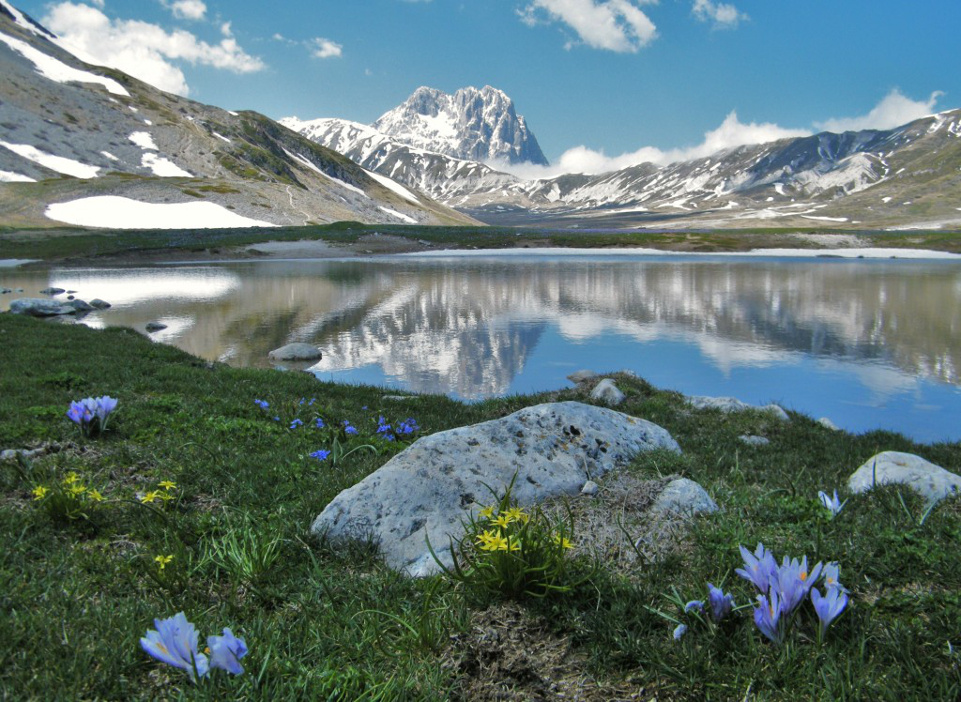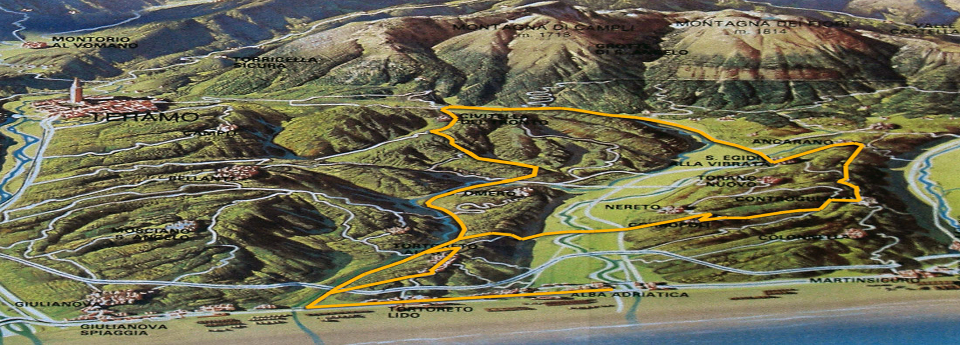Sightseeing Itineraries in Abruzzo
Abruzzo is located in central Italy and stretches from the heart of the Apennines to the Adriatic Sea, on a mostly mountainous and wild terrain. The route that spans from the Gran Sasso down to the sea crosses territories that are rich in history, traditions and art that never cease to surprise visitors. The Adriatic coast is characterized by long and sandy beaches to the north and pebbly beaches to the south. Also, the small villages of the hinterland, as well as the monasteries and castles of the region, are very charming and part of many touristic routes in this the "greenest region" in Europe.
Abruzzo is known as "the greenest region in Europe" as one third of its territory, the largest in Europe, is set aside as national parks and protected nature reserves: there are three national parks, one regional park, and 38 protected nature reserves. These ensure the survival of 75% of Europe's living species including rare species, such as the small wading dotterel, golden eagle, the Abruzzo (or Abruzzese) chamois, Apennine wolf, and Marsican brown bear. Abruzzo is also home to Calderone, Europe's southernmost glacier.

Abruzzo holds many of Italy's best-preserved medieval and Renaissance hill towns. Abruzzo boasts indeed twenty of the most beautiful villages in Italy, 2nd only to Umbria which has 22. These awards are not just for aesthetic beauty but also are for art and culture, historical importance and livability. The abrupt decline of Abruzzo's agricultural economy in the early to mid-20th-century saved some of the region’s most beautiful hill towns from the onslaught of modern development. Many lie entirely within regional and national parks. Among the most well preserved are Castel del Monte and Santo Stefano di Sessanio, which lie in the Gran Sasso National Park on the edge of the high plain of Campo Imperatore and nestled beneath the Apennines’ highest peaks; both hill towns, which were ruled by the Medicis for over a century-and-a-half, have relatively little tourism. Between the two towns sits Rocca Calascio, the ruin of an ancient fortress popular with film makers. One of the most artistically important town in the region is L’Aquila, located on the mountainside of the Gran Sasso and famous for “the Celestine Pardon, characterized by a priceless artistic heritage: from the magnificent Basilica di San Bernardino to the Sixteenth-Century castle, from the Basilica di Santa Maria di Collemaggio to the Fontana delle 99 Cannelle (99-spout fountain), embellished with a stone mask for every spout. Within the Gran Sasso National Park is also found Castelli, an ancient pottery center whose artisans produced ceramics for most of the royal houses of Europe. Civitella del Tronto played a crucial role in the history of the unification of Italy. The fortress of Civitella is today the most visited monument in the whole Abruzzo region. The Shrine of Gabriel of Our Lady of Sorrows, in the province of Teramo, with average of 2 million visitors per year is one of the 15 most visited sanctuaries in the world. Among the cities of art, we have to remember also Campli Atri, and many town and small villages of the Vibrata Valley. Those who enjoy new and unique gastronomic experiences can drive from the Adriatic coast up to Peligna Valley, through olive groves and vineyards to reach the hinterland, where they can visit farms and taste wines, oil and delicious local products. Finally, do not miss the folklore and religious festivals and events: from the famous Perdonanza Festival in L’Aquila to the Serpari di San Domenico Fair in Cocullo, from the Living Nativity scenes in Rivisondoli to the many fairs in the rest of the Region's small towns. Abruzzo rank fifth among the Italian regions by tourist arrivals and, in 2015, the American organization Live and Invest Overseas included Abruzzo in the list of World's Top 21 Overseas Retirement Havens. The study was based on such factors like climate, infrastructure, health care, safety, taxes, cost of living and more.



